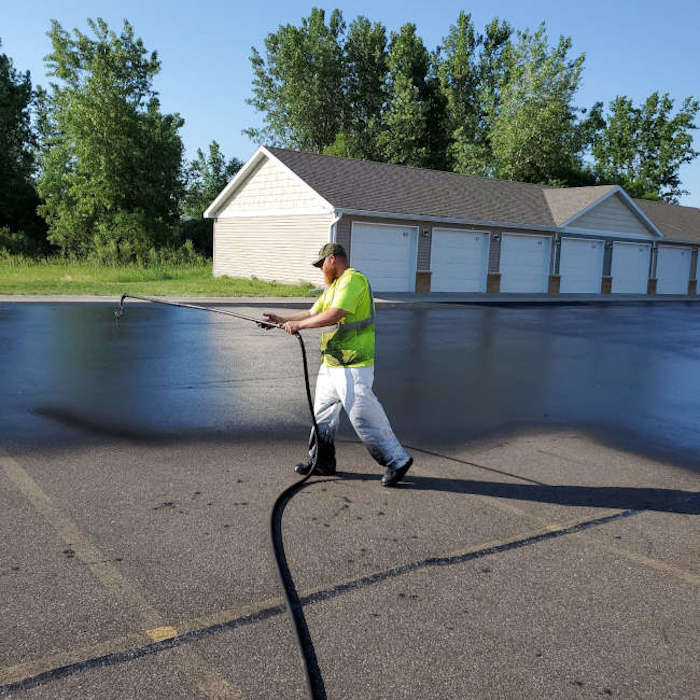Change Your Residential property's Appearances: Commercial Car Park Leading and Asphalt Sealing Solutions
Change Your Residential property's Appearances: Commercial Car Park Leading and Asphalt Sealing Solutions
Blog Article
Warm Mix Asphalt: A Sustainable Remedy for Pavement
Hot Mix Asphalt (HMA) has arised as a leading lasting selection for sidewalk remedies, offering a myriad of ecological advantages and cutting-edge technologies. As the need for eco-friendly building practices expands, discovering the subtleties of HMA's sustainability can supply beneficial understandings into the future of pavement remedies.
Ecological Benefits of Hot Mix Asphalt

In Addition, Warm Mix Asphalt helps to mitigate metropolitan heat island impacts. Its dark shade absorbs sunshine, reducing the amount of warm reflected back into the atmosphere contrasted to lighter-colored sidewalks. This can reduce ambient temperature levels in city locations, reducing the demand for air conditioning and eventually decreasing power intake.
Additionally, Warm Mix Asphalt adds to improved stormwater management. Its permeable nature allows water to penetrate the pavement and recharge groundwater supplies, reducing drainage and the danger of flooding. These ecological advantages make Warm Mix Asphalt a lasting choice for leading roads and highways.
Energy Efficiency in HMA Production
Is power efficiency a vital consider the manufacturing of Hot Mix Asphalt (HMA)? Absolutely. Power plays a substantial duty in the manufacturing of HMA, affecting both cost and environmental sustainability. One key aspect of power performance in HMA production is using warm mix asphalt (WMA) technologies (angled parking). WMA enables for the blending and placement of asphalt at lower temperatures contrasted to typical warm mix asphalt, causing reduced energy consumption throughout manufacturing. This procedure not just decreases fuel usage however also lowers greenhouse gas exhausts, making it a more eco friendly alternative.
Furthermore, improvements in plant innovations have actually brought about even more energy-efficient HMA manufacturing procedures. Modern plants are made with attributes like recycled asphalt pavement (RAP) processing capabilities, efficient burner systems, and boosted insulation, all adding to energy savings. By maximizing energy use in HMA manufacturing, the industry can lower its carbon footprint while maintaining top quality pavement products. Power visite site performance is, consequently, an essential consideration in ensuring the sustainability of Hot Mix Asphalt manufacturing.
Recyclability of Warm Mix Asphalt
The recyclability of Warm Mix Asphalt (HMA) is a crucial aspect of its sustainability and long-lasting environmental impact. HMA is one of the most recycled materials in the USA, with over 100 million lots of recovered asphalt sidewalk (RAP) being reused each year in new pavement building and construction. Reusing HMA supplies a number of ecological advantages, such as decreasing the need for virgin products, reducing energy intake during production, and reducing the amount of waste sent to garbage dumps.
The process hop over to here of recycling HMA includes grating the existing pavement, crushing it into smaller sized items, and blending it with brand-new aggregate and asphalt binder to create a recycled mix. In general, the recyclability of HMA plays a substantial function in advertising lasting practices within the pavement sector.

Long-Term Performance of HMA
Asphalt sidewalks show sturdiness and strength over an extensive period, reflecting the long-lasting performance of Warm Mix Asphalt (HMA) Additionally, developments in HMA technology, such as the use of polymer-modified binders and warm mix asphalt, have even more enhanced the toughness and longevity of HMA pavements. By focusing on top quality building and construction and upkeep methods, HMA continues to show itself as a affordable and lasting remedy for resilient pavement framework.

HMA: Durability and Sustainability
Demonstrating both resilience and sustainability, Warm Mix Asphalt (HMA) has actually ended up being a cornerstone in the building and construction of long-lasting pavement frameworks - hot mix asphalt. HMA's sturdiness comes from its capacity to withstand hefty tons, severe weather problems, and high web traffic quantities, making it a dependable selection for roadways, highways, and airport terminal paths. The composition of HMA, which usually consists of accumulations, binder, and filler, a fantastic read plays an important role in boosting its longevity and resistance to wear and tear
Moreover, HMA's sustainability depends on its recyclability and energy-efficient production procedure. The capability to reuse reclaimed asphalt sidewalk (RAP) in new HMA mixtures lowers the need for virgin materials and lessens the environmental influence of pavement building and construction and upkeep. In addition, the energy effectiveness of creating HMA lies in its reduced mixing temperatures compared to other pavement products, causing minimized power consumption and greenhouse gas exhausts.
Final Thought
In final thought, hot mix asphalt (HMA) supplies a sustainable option for sidewalk with its environmentally pleasant features. HMA's recyclability, power effectiveness in production, and lasting resilience make it an environment-friendly selection for roadway building.
HMA is one of the most recycled materials in the United States, with over 100 million lots of reclaimed asphalt pavement (RAP) being reused annually in brand-new sidewalk building.The process of recycling HMA entails milling the existing pavement, squashing it right into smaller pieces, and mixing it with brand-new accumulation and asphalt binder to produce a recycled mix.Asphalt sidewalks demonstrate resilience and strength over a prolonged period, showing the long-term performance of Warm Mix Asphalt (HMA) In addition, developments in HMA technology, such as the usage of polymer-modified binders and cozy mix asphalt, have actually better boosted the longevity and long life of HMA sidewalks. The ability to reuse recovered asphalt pavement (RAP) in new HMA blends reduces the demand for virgin products and minimizes the environmental impact of sidewalk building and construction and maintenance.
Report this page